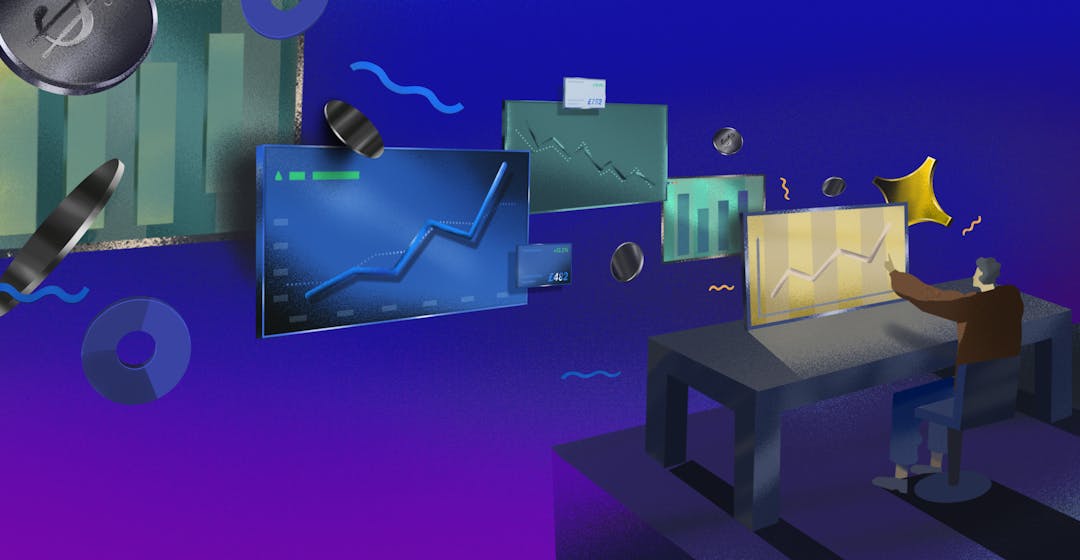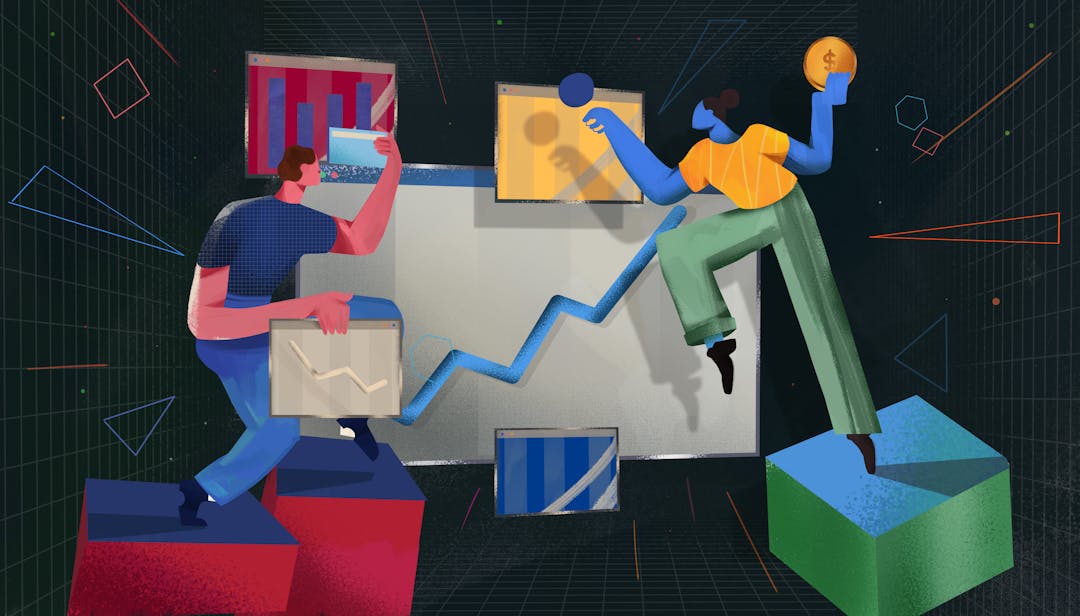Whether you’re here because you missed our recent webinar, you’re more of a reader than a watcher, or if you just love to know everything there is to know about product-led growth, you’ve come to the right place.
We are about to take you through the main takeaways (including some very hot PLG trends 🔥), discussed by our very own CMO, Andrew Davies, and three-time SaaS founder and B2B SaaS insight genius, Adam Schoenfeld.
Here, you’ll find out more about what PLG means to Andrew and Adam, plus five important insights that could change the way you’re looking at your product-led SaaS growth strategy.
Let’s go.
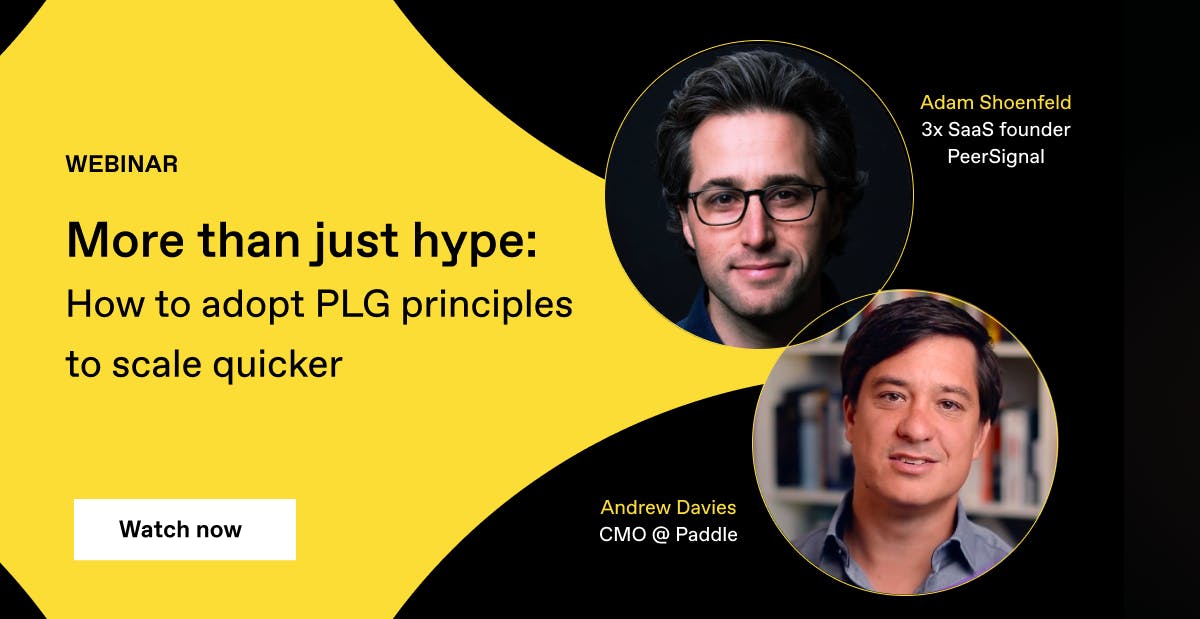
First up, what is product-led growth?
Product-led growth (PLG) is a go-to-market strategy that is all about user acquisition, conversion, retention, and expansion being driven by the product itself.
That’s right - your product acts as a solution, salesperson, and single source of truth in terms of reporting and analytics. And yep, that means it’s got to be a good product.
In the webinar, Adam actually splits product-led growth into two dimensions:
- A frictionless path to buy, try, or use a product
- Product-driving distribution
A ‘frictionless path’ is the customer journey itself, whereas distribution is the customer raving about it. Why? Because your product is doing its job, and providing value - value that others need to hear about.
The beauty of product-led growth
It’s no secret that the SaaS industry is a big fan of PLG - us included. The reasons for its popularity are clear:
- It drives rapid growth: 83% of public SaaS companies to reach $100m in their first 5 years used product-led growth.
- It works at massive scale: 50% of Asana’s customers came from self-serve as they crossed $400m ARR.
- And it even matters at IPO: 60% of Expensify’s customers were starting on the free plan as they IPO’d.
[Source: Jason Lemkin, SaaStr]
It’s so important to think about this from the buyer’s perspective - if PLG is right for your business, and if it is, the specific flavors of PLG that you implement; whether it be exclusively product-led or if you’re going to have a hybrid which is a lot more common.
Adam Schoenfeld
Five important insights into product-led growth
Now, for the fun bit. Get your cups of coffee, tea, kombucha, or standard tap water at the ready for these five important insights into product-led growth in 2022.
1) You’ve got the shakers, the makers… or both
When considering the different markets you want to target and sell into, it’s great to look at the customers within them as shakers and makers - like Andrew does. Definition time:
- Shakers = the businesses who are able to define the org chart and tech stack, and bring it all together.
- Makers = the businesses that just want to get on with trying the product, without booking a demo or speaking to sales.
You can define these two types of businesses as upmarket and downmarket. For the shakers, you need an enterprise rep, SDR, and sales motion to go with it. But we’re seeing more businesses fall into the ‘makers’ category - the ones that just want to get down to the nitty-gritty of it, without any sales chat or demos. So with this, you need an easy-to-use or well-documented product, along with a great support and engineering team doing their thing.
2) There is no single playbook for PLG
The big mistake people make with PLG is thinking that it’s just bolting on a free trial and calling yourself a ‘product-led’ business.
There are various ways to look at PLG, and a lot of ways to marry it with other models. The main differentiator is the call-to-actions (CTAs) found on company websites.
Think about it:
- Sales-led/sales-assist: Book a demo, speak to sales, etc
- Product-led/self-serve: free trial, freemium, downloads, sign up, get started, etc
From Adam’s own insights, 82% of businesses actually have both types of CTA on their website - showing SaaS’ love for (and success with) a hybrid sales motion.
This gives the buyer the opportunity to purchase how they want to purchase - whether that’s through a sales rep, or simply through engaging with the product directly and buying on the spot through varied CTAs and offers.
Take a look at just how much it can vary with some examples of top PLG companies:
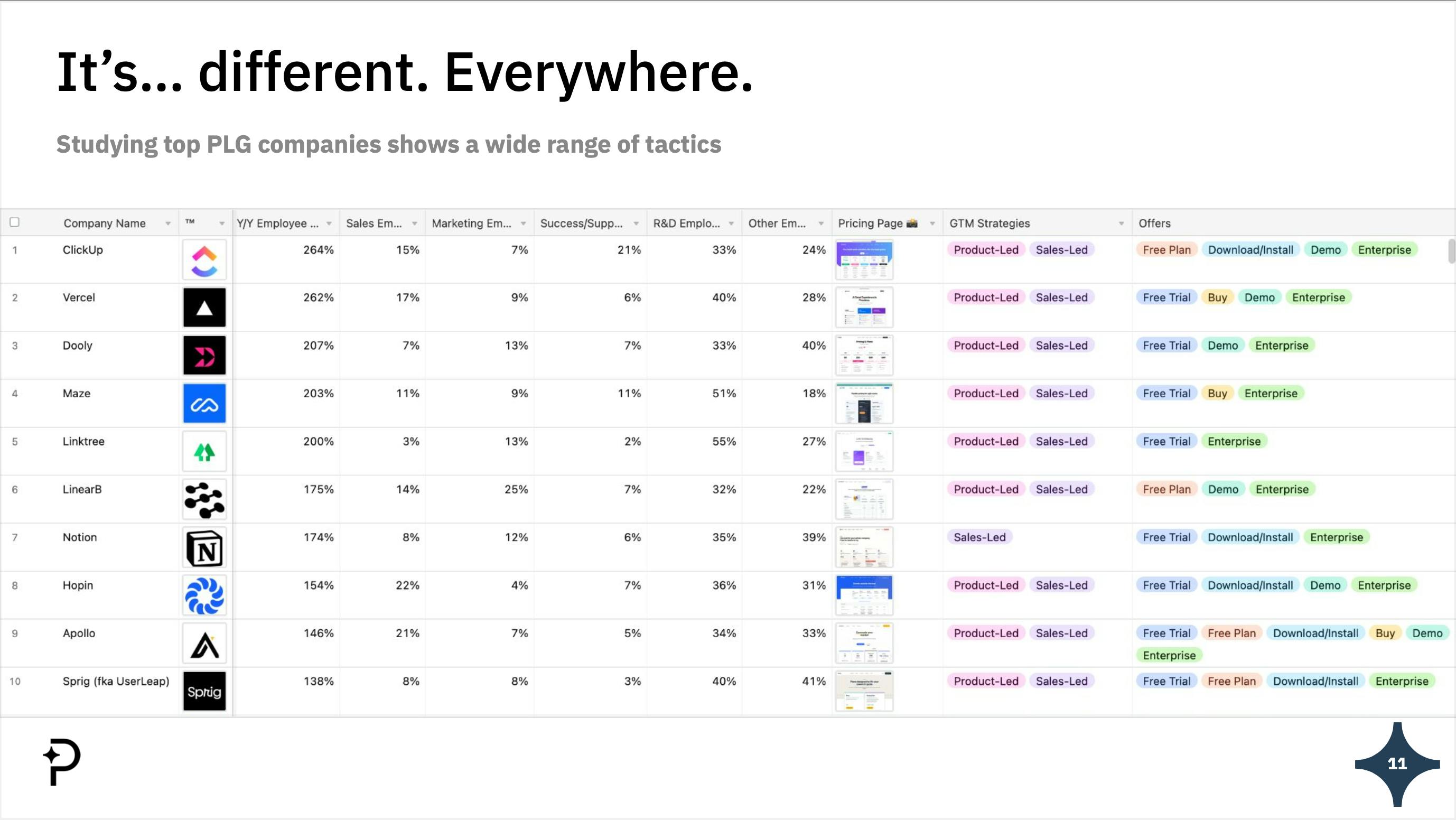
3) Product-led does *NOT* mean rep-free
This leads nicely on to our next point - and a very important one, at that. Even if you’re a solely product-led business does not mean you don’t have a sales rep or team.
Without any involvement from sales, you’re going to be at a loss.
As suggested in the diagram above, product-led companies require both a great product that does drive acquisition, conversion, retention, and expansion, as well as a sales-assisted model to handle:
- Converting freemium or free trial customers to paying customers
- Larger contracts (mid-market or enterprise)
- Upsell and cross-sell opportunities
So whilst a boost in product-led companies is happening, this by no means translates as the disappearance of sales teams. Quite the opposite, actually. Product-led lets you grow rapidly in terms of acquisition and numbers, sales-led helps you grow faster in terms of the accounts with the bigger $$$.
Balancing your sales and marketing team is important, and how you do that comes down to an understanding of your customers and how they value your product or service. See how it can vary after the appropriate research:
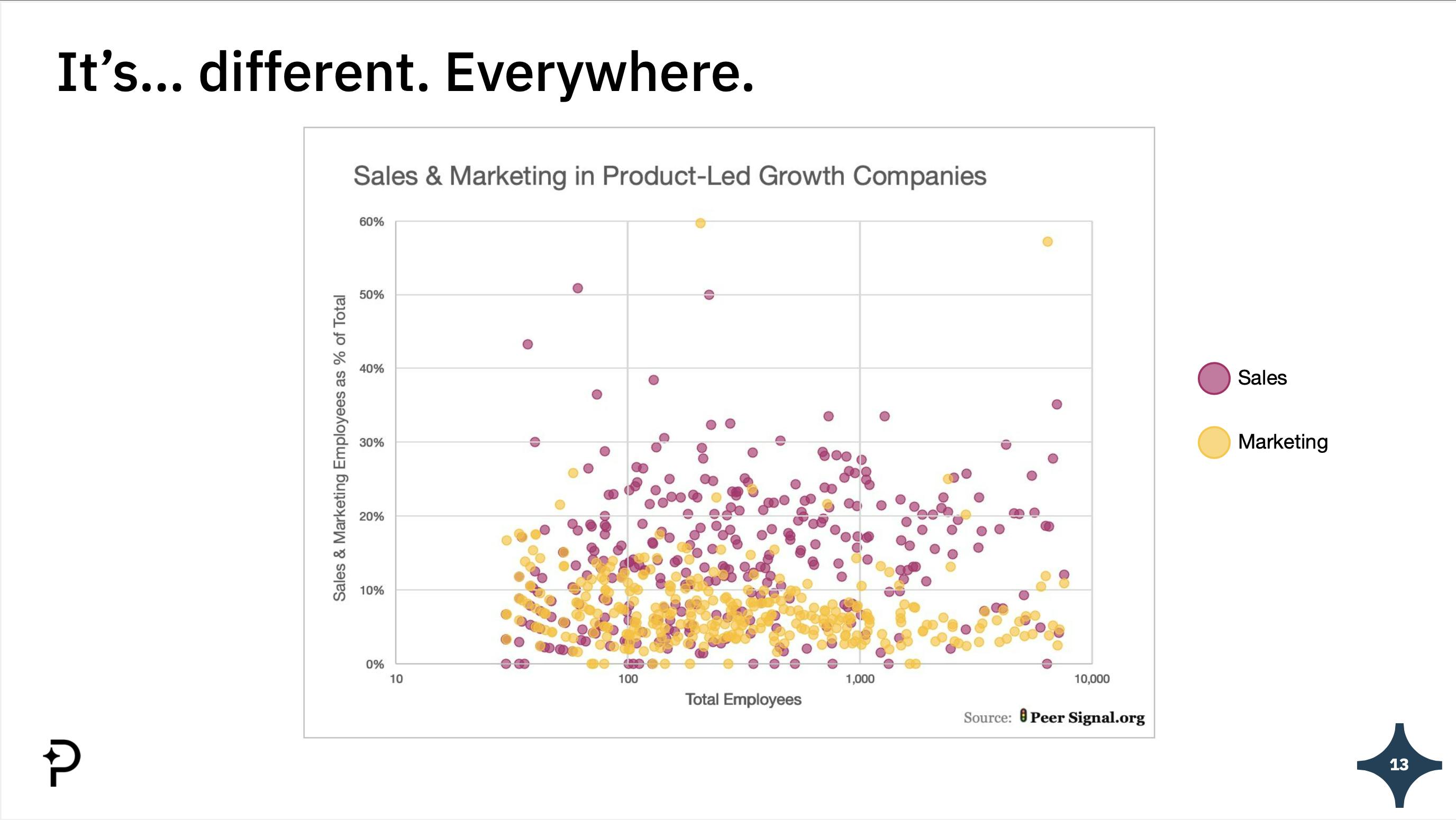
4) The ceilings with PLG will happen as you scale
As you scale and take on different markets, your product-led strategy may start to fail you. That’s what we mean by ceilings: the product-led growth gets to a certain point, and can’t go any higher.
This happens at different scale points, including:
- After saturating early adopters
- If large company adoption stalls
- As fast-growing customers churn
- When audience plateaus
And these points are exactly where your sales team can step in, and take your business growth to higher points. That’s the beauty of adding a sales-led motion. 📈
Adam included this interesting insight into the percentage of sales reps in companies’ total headcount as they scale up:
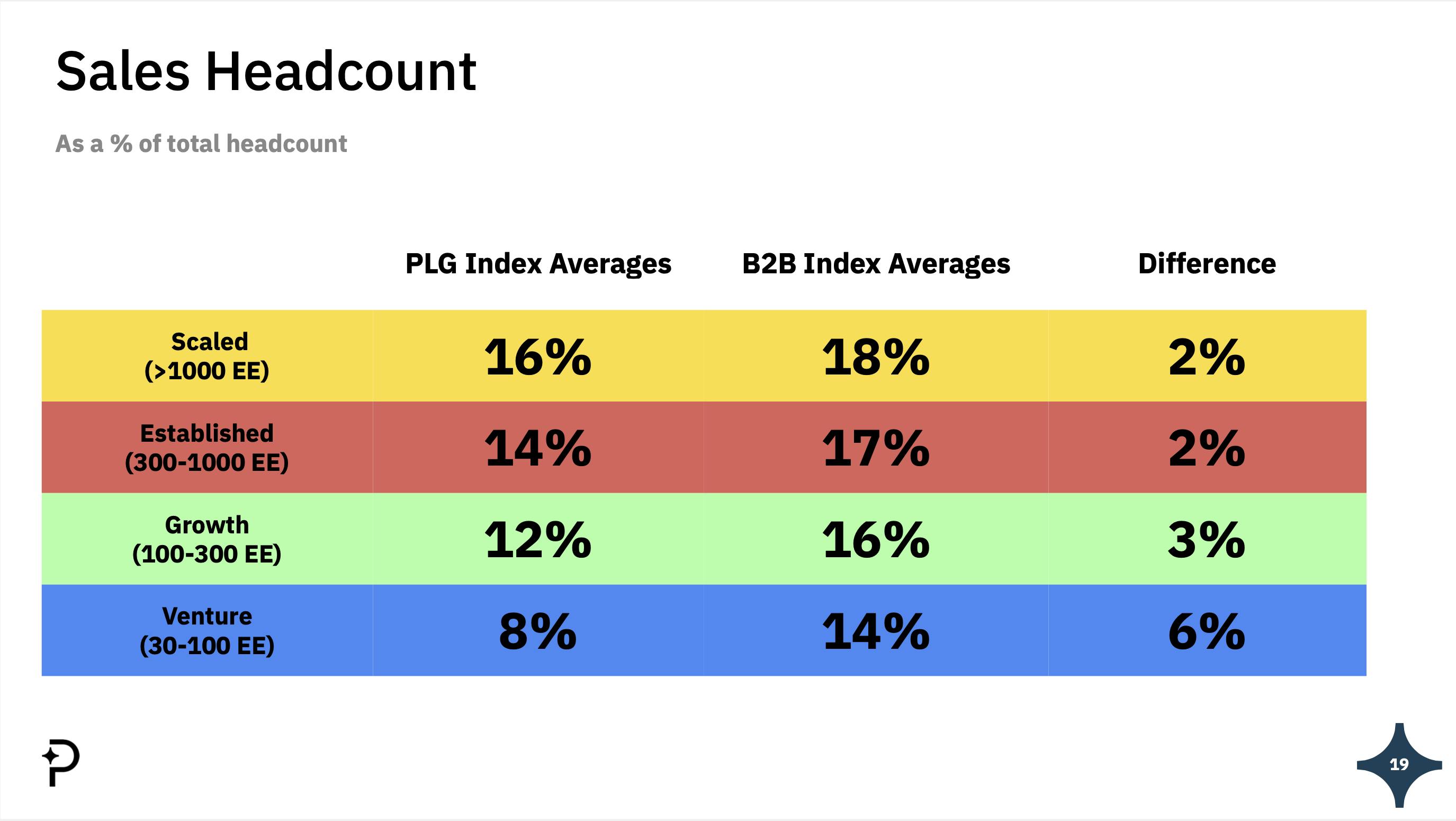
5) Community and content are kings 👑
Product-led growth is a strategy that can add other components to help it spin - and building (and managing) a community is one of them.
Community-led growth is a phrase and a motion that we are increasingly hearing amongst SaaS businesses because 1) it works well for getting your product heard about 2) it provides you with invaluable customer feedback from those that use your product.
So that’s ticking a few boxes on your to-do list: growth, marketing, and product optimization (ideal for more acquisition and retention).
Community-led growth is an incredible multiplier on a PLG strategy - it’s a huge growth lever lying in plain sight.
Andrew Davies
Let’s take a look at Miro and its community-led growth strategy as an example. How do they do it? The quick answer is TEMPLATES.
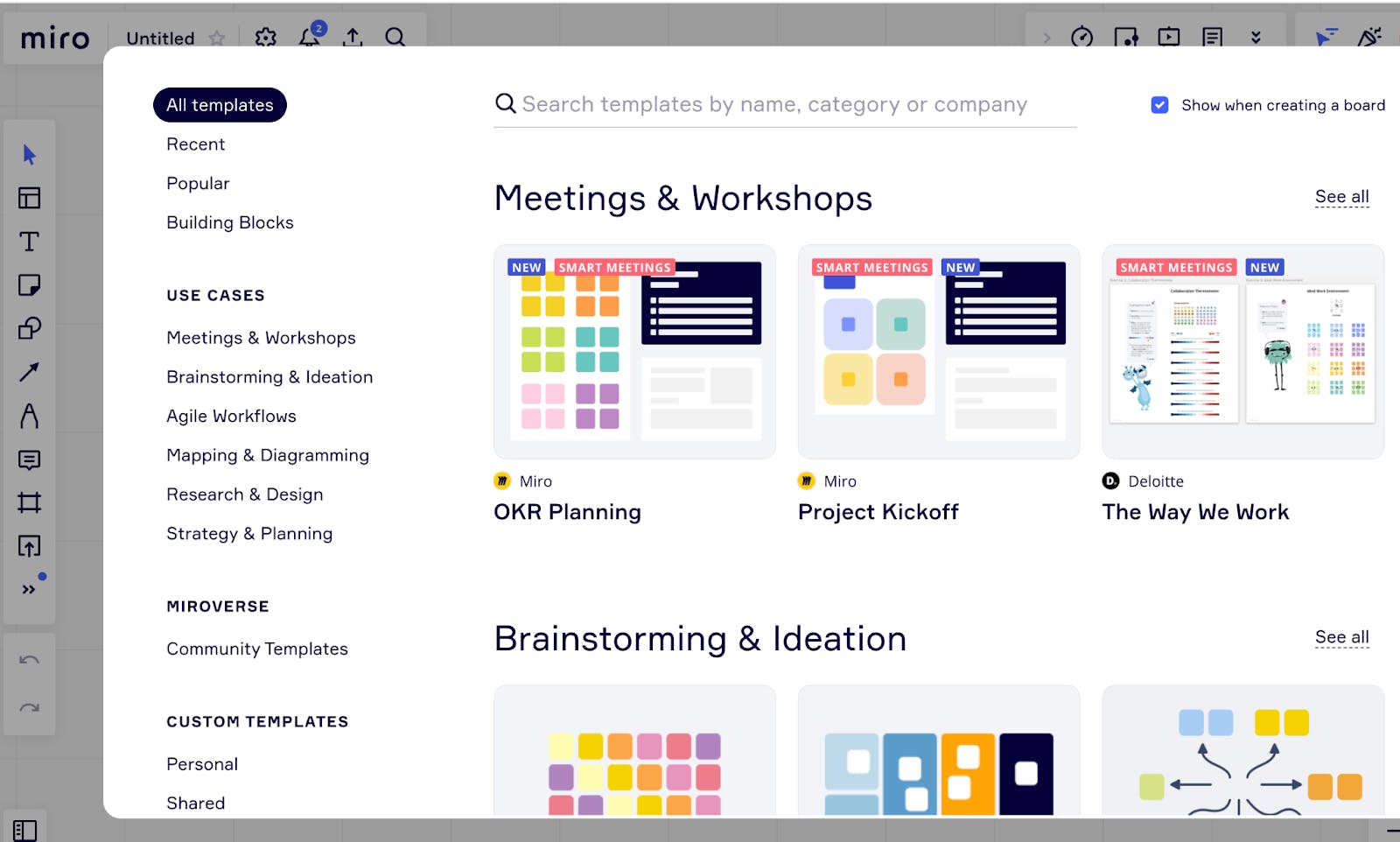
With template libraries covering a multitude of users’ needs, whether professional or personal, Miro not only makes its product quick and easy-to-use, but it inspires its users to make the most of the product.
With Miro, gone are the days of a blue marker on a whiteboard. In exchange, you’re getting a colorful, enjoyable, yet simple layout that can be shared between colleagues and companies. And repeat. Hello, more Miro creators and hello, benefits for remote working too.
The key to community building is make people’s lives easier and they will talk about it.
If you’d like to hear more about community-led growth, or any more on the other PLG trends and insights we’ve discussed, definitely check out our recent webinar: More than just hype: How to adopt PLG principles to scale quicker.



